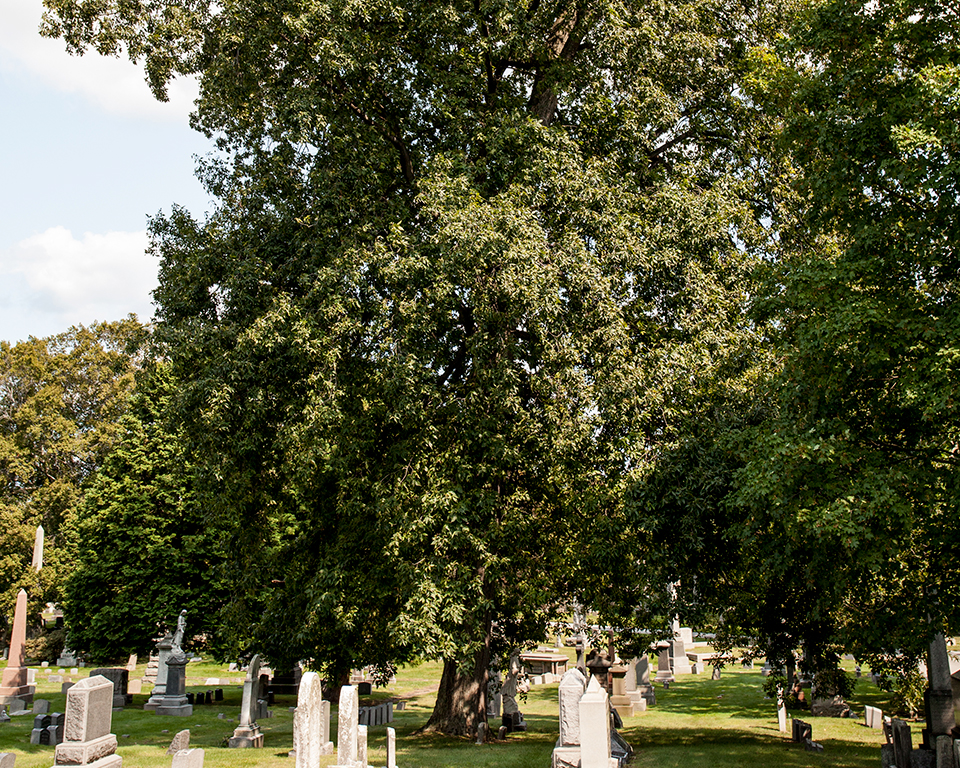CARYA GLABRA – HICKORY, PIGNUT

Pignut Hickory grows best in sun or partial shade on well-drained, acid soils and is very drought-tolerant. Trees can be seen in dry woodlands. Trees will show minor-element deficiencies on alkaline soils. It grows well in sand or clay, sending deep roots down below the trunk in well-drained soil. Plants serve as hosts for butterfly larvae. Tiny fruit can help separate this from other hickories.
Large existing trees are often left near new homes and other buildings in new developments. Roots damaged by construction equipment can decay quickly. This can leave the plant with few supporting roots in the years following construction despite a green canopy. The tree could fall over as a result. In addition, branches that are suddenly exposed to unlimited light when nearby trees are removed begin to grow rapidly. As a result, they could become too long and break. Consider shortened them with reduction cuts to help prevent breakage. Trees are considered good compartmentalizers of decay.
Hickory wood is versatile and is used for chair legs, tool handles, including axes and hammers, and for smoking meat and fish. Fruit ripens in fall and is a source of food for many species of wildlife. This is an under-utilized native tree with potential for much wider use in parks. Young trees have a distinct tap root which can challenge the tree nursery operator. Trees resist breakage in ice storms compared to many of the more finely branches trees. Trees have a reputation for displaying a great sensitivity to impacts of construction activities in the root zone.
Wood specific gravity averages about 0.75 g/cc. Hickorys are considered a ring porous or semi-ring porous wood. They generate pollen that causes allergies in many people.

